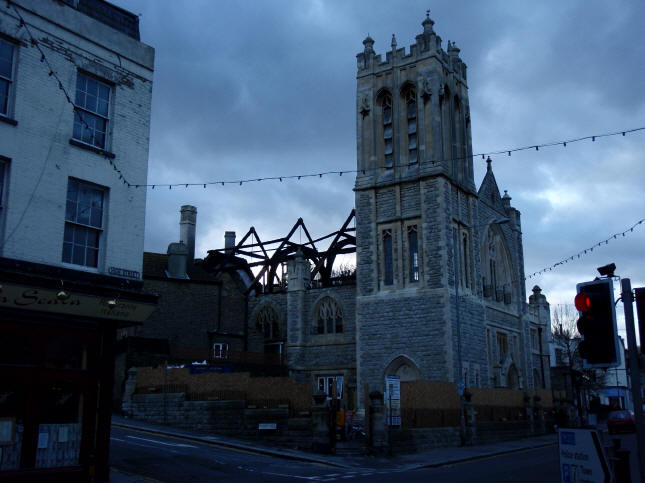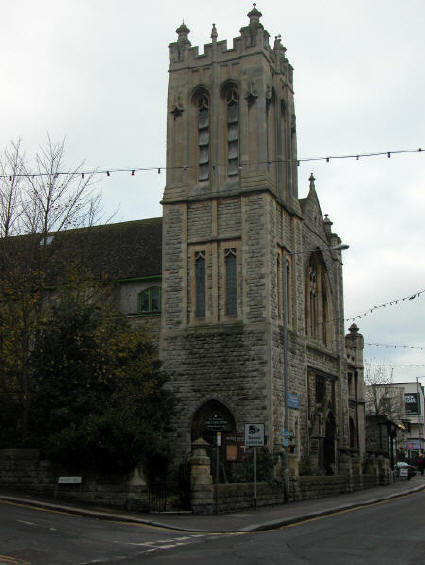| Back |
Congregational Church |
|
|
|
||
| Information on this page is taken from, among
other sources, "Congregational Church History in Dover, 1600-1925",
a pamphlet produced in 1925 by H.J. Southey to mark the 21st anniversary
of the opening of the new church. |
||
|
||
| The Zion Chapel, on the corner of Queen Street
and Last Lane, was the first Dissenters' chapel to be built in Dover,
being erected in 1703. It was re-built in 1814. After the
amalgamation of 1900, it remained as a Mission Chapel until being sold to
the Baptists from the Pentside Chapel in May 1902. A few years later it was sold again, and became the Queen's Hall Electric Picture Theatre (cinema). It was later sold to Mr Took, who used it for many years as a leather works, before finally becoming an amusement arcade. The chapel was demolished in October 1974 to make way for a £5m
"piazza" development. |
||
|
(awaiting pictures)
|
||
|
||
| In 1823, Mr. Iggulden built the church of
St John for the Wesleyans in Middle Row (Pier
District). This was later transferred to the Independents
(Congregationalists). They in turn transferred it to Captain Marryat
and his sister, who were maintaining it for the benefit of mariners in
1843. A second church was built in Russell Street in July 1838, which was extended in 1887 to provide an annexe for the Sunday School. The two churches were merged in 1900 and, in 1904, the present building was erected in the High Street, at the junction with Priory Road. The new church was opened on 7th September 1904. The
following is a list of ministers of the three churches as far as can be
ascertained from Southey: |
||
|
Zion Chapel Rev. Samuel Pryce, 1706-10 various ministers are mentioned from 1771-1802, including: Revs. Messrs. Moody, Samuel Beaufoy, Tichere and Povah. Rev. William Mather, 1802 - no records available until: Rev. Ellis Parry, 1849-53 |
Russell Street Church Rev. Stanley Brewer, 1844-46 United Church Re. F.P. Basden, 1900 -04 assisted by: Rev. S.J. Cowdy and High Street Church Rev. F.P. Basden, 1904-16
|
|
In 1971, the Congregationalists amalgamated with the Presbyterians to form the United Reform Church. The High Street church was renamed as St. Columba in 2001. It closed its doors on 31st August 2003 when, with the Tower Hamlets Methodist Chapel, it united with the Buckland Methodist Church to form a new entity, known as the Beacon Centre, from its location at the corner of Beaconsfield Road. There were fears that, like most of the redundant churches in the town, the High Street church would be demolished. However, it was sold to a developer who converted the building into dwellings in 2007. A week before the sales campaign was due to open, the upper floor and the roof were completely destroyed by fire. |
||
 |
||
